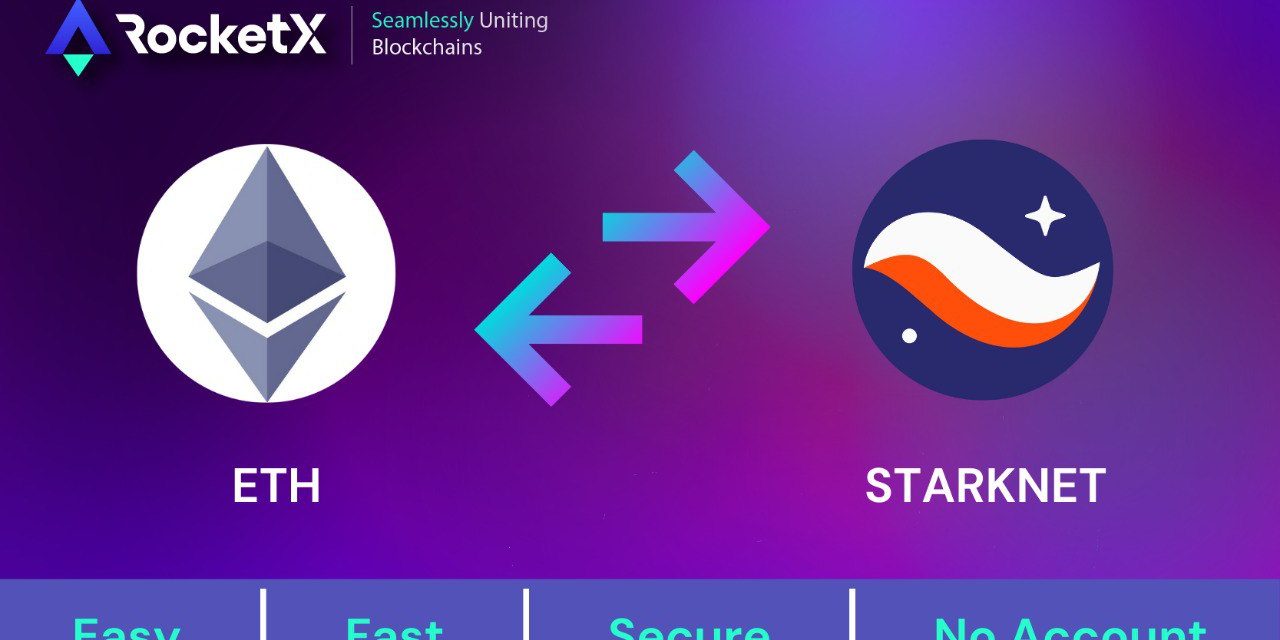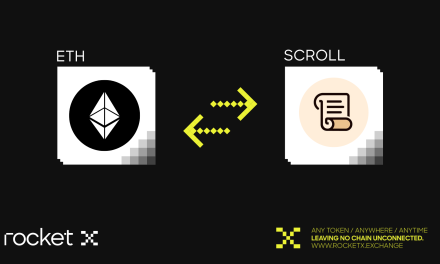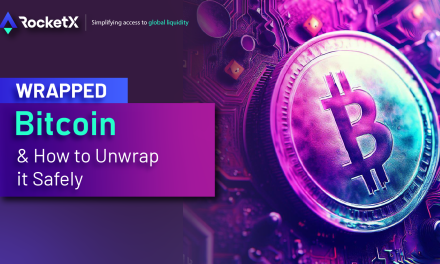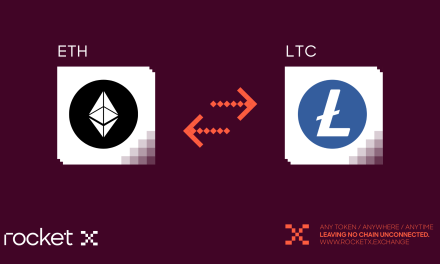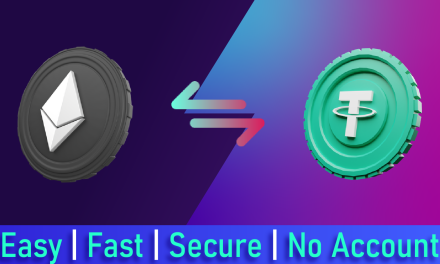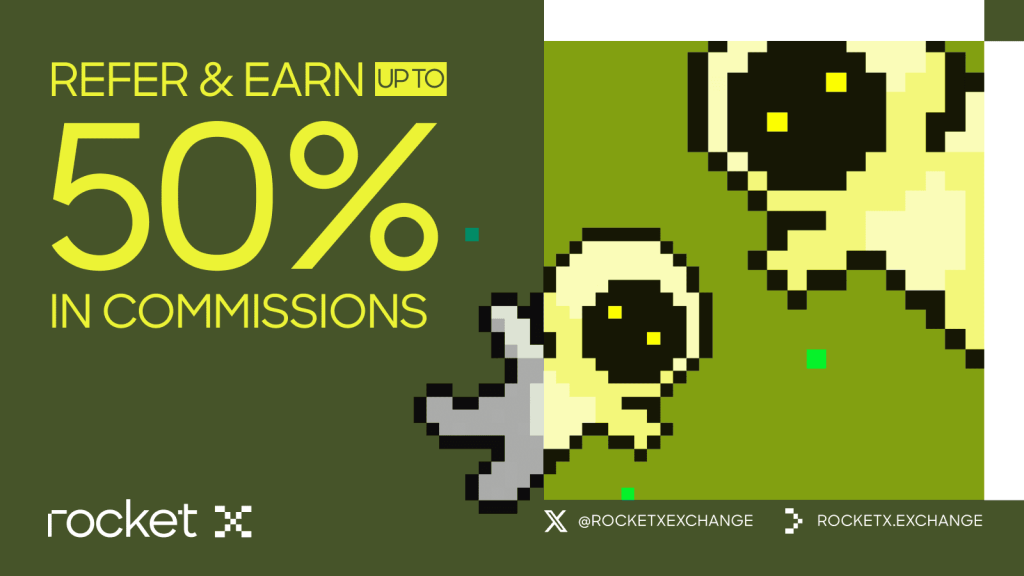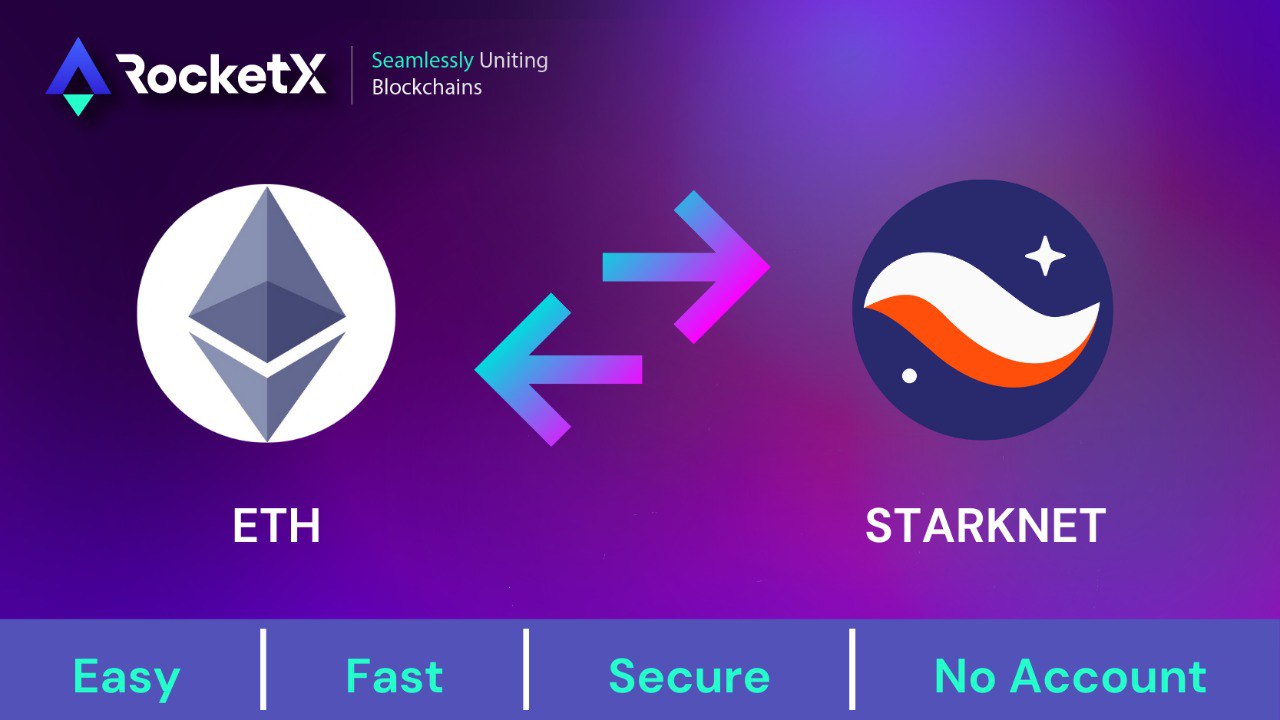
Introduction
StarkNet is a new solution that works on top of Ethereum. It uses advanced tech called STARK to make things faster and cheaper. This means developers can make cool stuff like DeFi apps and NFTs. And they can do it all without leaving Ethereum behind.
Imagine a world where Ethereum transactions are super fast and almost free. That’s what StarkNet offers, a new way to make Ethereum work better. It’s changing the game in decentralized finance (DeFi). With over $500 million total value locked in as of Sep 2024, It is set to shake up the crypto world.
What is StarkNet?
StarkNet is a Layer 2 scaling solution for Ethereum, developed by StarkWare, a company founded by Eli Ben-Sasson, Alessandro Chiesa, Uri Kolodny, and Michael Riabzev in 2018. StarkNet addresses Ethereum’s scalability challenges by significantly increasing transaction throughput while maintaining the network’s security and decentralization. The platform can handle thousands of transactions per second (TPS), making it a powerful tool for enabling more efficient and cost-effective operations on Ethereum.
The vision behind this network is to enhance Ethereum’s capabilities, allowing it to support a broader range of decentralized applications (dApps) without compromising performance. By making Ethereum more scalable and accessible, it aims to drive the growth of the decentralized finance (DeFi) ecosystem and contribute to the broader development of Web3 technologies. As StarkNet continues to evolve, it is set to play a pivotal role in the future of blockchain innovation.
How StarkNet Works
StarkNet is an advanced Layer 2 solution built for Ethereum, leveraging zero-knowledge proofs to optimize transaction processing. By using this technology, StarkNet makes transactions faster and more affordable while preserving Ethereum’s security and decentralization.
The key to StarkNet’s efficiency lies in zero-knowledge proofs, which allow transaction verification without exposing the underlying details. This enables the processing of numerous transactions off-chain, significantly enhancing Ethereum’s speed and cost-effectiveness.
At its core is the concept of “rollups,” where multiple Ethereum transactions are combined into a single batch on a separate layer. This method reduces transaction costs and expands Ethereum’s accessibility, allowing more users to participate in the ecosystem.
As the StarkNet ecosystem grows, its scalable and secure technology will be crucial in realizing the full potential of decentralized applications and the broader StarkNet crypto world.
STRK Token: Supply, Distribution, and Lock-Up Schedule
In May 2022, StarkWare introduced the STRK token, minting a total supply of 10 billion tokens on-chain by November 30, 2022. These tokens are vital to the StarkNet ecosystem, enabling governance, transaction fees, and network incentives. The distribution is carefully planned: 20.04% goes to early contributors, 18.17% to investors, and 10.76% for StarkWare’s operational services. Additional allocations include 12.93% for development grants, 9% each for community provisions and rebates, 10% for the Foundation’s strategic reserves, 8.10% for the treasury, and 2% for donations.
To align long-term interests, tokens for early contributors and investors follow a lock-up schedule, releasing gradually between 2024 and 2027. Circulating supply will increase over time with new tokens minted as staking rewards, but no new tokens will be issued for block rewards while StarkWare operates the sequencer. This structured distribution ensures sustainable growth and community alignment within the StarkNet network.
How to Bridge to StarkNet from Ethereum Network.
Using RocketX Exchange to bridge your assets to this network is an easy and effective operation. Transferring your funds to this high-performance blockchain is crucial, regardless of whether you want to trade, stake, or investigate dApps on StarkNet. This is how you do it:
Step 1: Connect Your Wallet
Connect your wallet to RocketX first. Make sure the wallet you’re using, like MetaMask, is set up to connect to Ethereum, which is where your assets are currently located.
Step 2: Choose Networks and Assets
Choose the asset you wish to bridge and the source network (such as Ethereum) via the RocketX interface. The destination chain should then be set to StarkNet.
Step 3: Enter the Amount
Enter how much cryptocurrency you want to send to StarkNet. Make sure you have enough money in your account, plus extra for network fee expenses.
Step 4: Enter Your StarkNet Wallet Address
Enter the address from your wallet where you would like the bridged assets to be delivered. Verify the wallet address twice to make sure you don’t make any mistakes that could cause you to lose money.
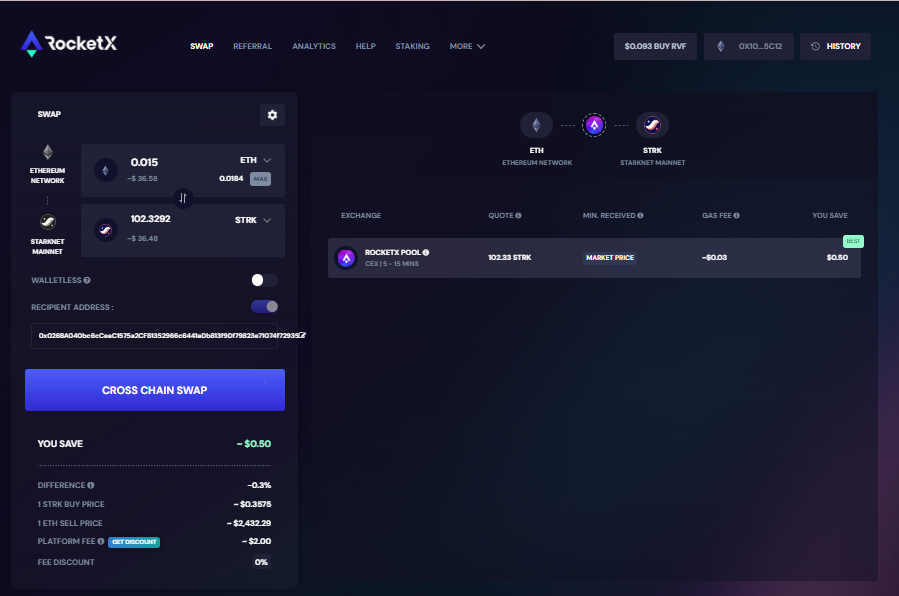
Step 5: Confirm and Execute
Verify every element of the transaction, such as the amount, the networks used, and your StarkNet wallet address. To continue, click on Cross Chain Swap and validate the transaction in your wallet.
Step 6: Check Your Wallet
Once the bridging process is over, your assets will be visible in your wallet. They can now be utilized for activities like trade and staking.
Wallets and Compatibility.
The StarkNet ecosystem has many compatible wallets. These wallets help users keep, manage, and use their assets safely. This lets users go into decentralized applications (dApps) and join the ecosystem.
Some of the leading wallets include:
- Argent Wallet: A user-friendly mobile wallet that simplifies asset management and interaction with the network.
- Ledger Nano: A hardware wallet renowned for its security, ideal for safeguarding tokens and NFTs.
- Braavos Wallet: A web-based option that integrates well with both Ethereum and this Layer 2 solution, offering a smooth experience for users.
These wallets meet the needs of all users, from newbies to crypto experts. They let users join the growing ecosystem. Users can use a lot of decentralized applications and services.
Exploring the StarkNet Ecosystem.
The StarkNet ecosystem is booming, with many decentralized applications (dApps) being made and used. These dApps cover areas like DeFi, NFTs, and blockchain gaming.
DeFi Applications
- Ekubo: A DEX offering fast, cost-effective trading, leveraging the network’s scalability for improved efficiency over Ethereum’s Layer 1.
- zkLend: A platform for decentralized lending and borrowing, allowing users to earn interest or borrow assets with collateral.
NFT Applications
- Element Market: A marketplace for creating, buying, and trading NFTs, designed for smooth and efficient user experiences.
Gaming Applications
- Loot Realms: A play-to-earn platform where players earn rewards through NFTs, offering fast transactions and minimal fees.
- Metacube: Metacube is a Massive Multiplayer Free2Play Event game on Starknet. Compete with thousands of players, own the assets you collect, and conquer the Metacube.
As StarkNet grows, so does its potential for more innovation and use in DeFi, NFTs, and gaming. Its focus on being scalable and accessible makes it a top choice for new decentralized apps..
The Future of StarkNet.
StarkNet is a top Layer 2 scaling solution for Ethereum. It’s set to be key in the future of decentralized finance and Web3. The platform is working hard to improve its scalability, grow its ecosystem, and get more people to use it. This makes it a big part of the next wave of blockchain applications and services.
Conclusion.
StarkNet is a big step forward for Ethereum, solving issues with speed and cost. It uses new tech called zero-knowledge proof for faster, cheaper, and safer transactions. This opens up new chances for things like decentralized finance and NFTs.
The ecosystem is growing fast and will be key for Ethereum’s future and Web3. The StarkNet airdrop and STRK token have made people more interested in the platform.
It has huge potential and will deeply affect the Ethereum network and blockchain world. As more developers and users try out this tech, StarkNet’s future looks bright. It promises to make decentralized apps more scalable, secure, and accessible.

